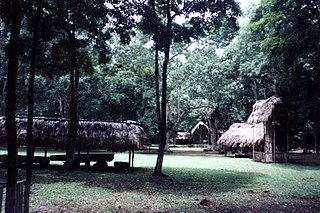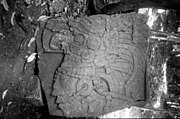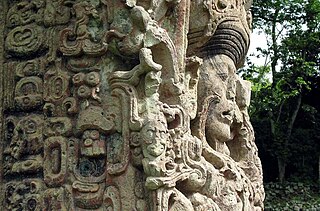| Itzamnaaj K'awiil | |||||
|---|---|---|---|---|---|
| King of Dos Pilas | |||||
Itzamnaaj K'awiil on stela | |||||
| Reign | March 24, 698 – October 22, 726 | ||||
| Predecessor | Itzamnaaj B'alam | ||||
| Successor | Ucha'an K'in B'alam | ||||
| Born | January 25, 673? | ||||
| Died | October 22, 726 | ||||
| Issue | K'awiil Chan K'inich? | ||||
| |||||
| House | Royal house of Dos Pilas | ||||
| Father | B'alaj Chan K'awiil | ||||
| Mother | Lady of Itzan | ||||
| Religion | Maya religion | ||||
Itzamnaaj K'awiil[ pronunciation? ] (January 25, 673? – October 22, 726) was a Mayan king of Dos Pilas. He was the third known ruler of that place. He is also known as the Ruler 2 and Shield God K.

Maya kings were the centers of power for the Maya civilization. Each Maya city-state was controlled by a dynasty of kings.Also the position of king was usually inherited by the oldest son.

Dos Pilas is a Pre-Columbian site of the Maya civilization located in what is now the department of Petén, Guatemala. It dates to the Late Classic Period, being founded by an offshoot of the dynasty of the great city of Tikal in AD 629 in order to control trade routes in the Petexbatún region, particularly the Pasión River. In AD 648 Dos Pilas broke away from Tikal and became a vassal state of Calakmul, although the first two kings of Dos Pilas continued to use the same emblem glyph that Tikal did. It was a predator state from the beginning, conquering Itzan, Arroyo de Piedra and Tamarindito. Dos Pilas and a nearby city, Aguateca, eventually became the twin capitals of a single ruling dynasty. The kingdom as a whole has been named as the Petexbatun Kingdom, after Lake Petexbatún, a body of water draining into the Pasión River.









